
BLACK HISTORY FYI
Vista Tribute to Unheralded Black Pioneers, Inventors, and Heroes
Black History FYI
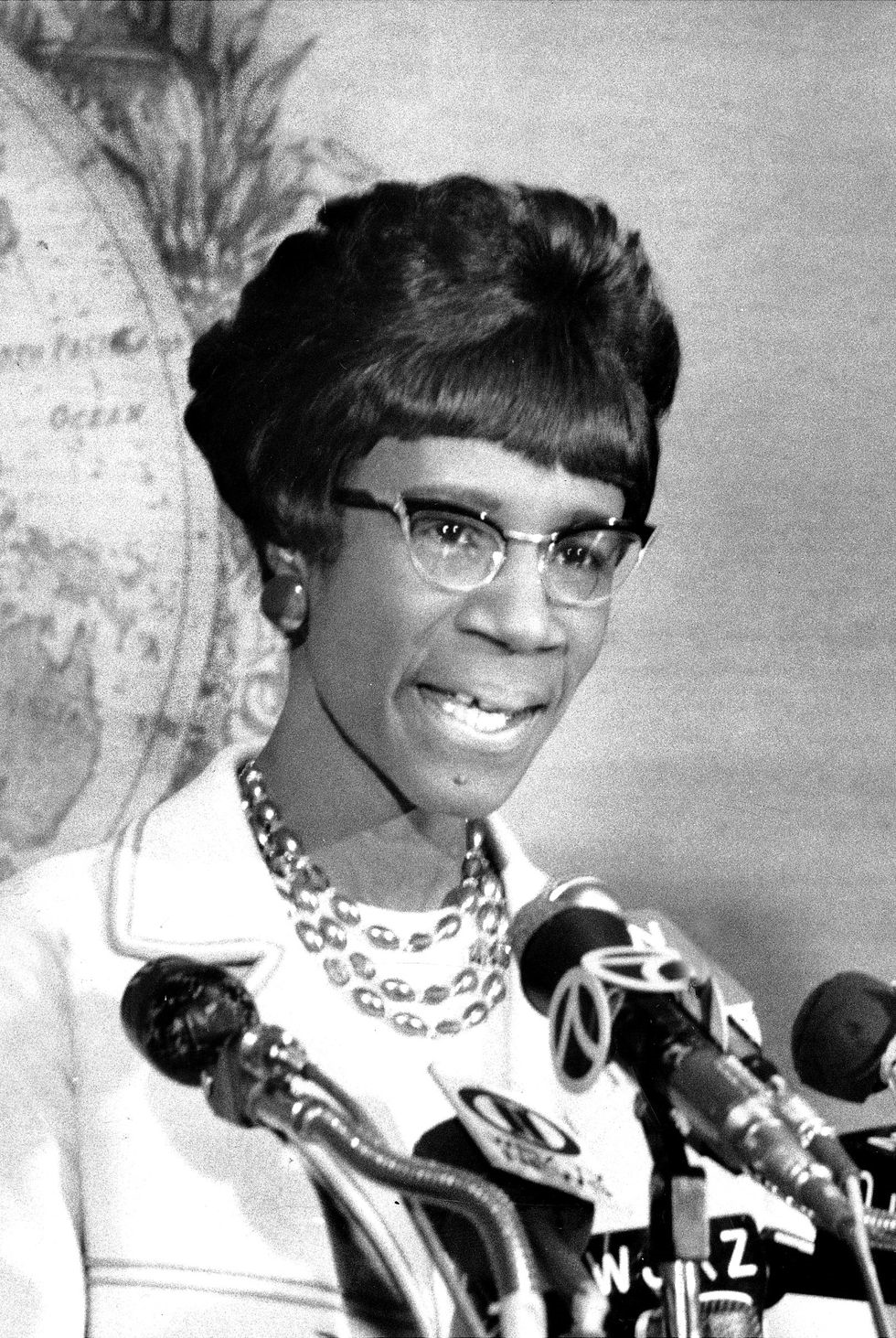
Shirley Chisholm (1924 – 2005)
Congress is more diverse now than it’s ever been. However, when Chisholm was attempting to shatter the glass ceiling, the same couldn’t be said. During the racially contentious period in the late ’60s, she became the first Black woman elected to Congress. She represented New York’s 12th District from 1969 to 1983, and in 1972, she became the first woman to run for the Democratic Party’s presidential nomination. Her campaign slogan: “Unbought and Unbossed” rings even louder today. Senator Kamala Harris recently paid tribute to Chisholm in her presidential campaign announcement by using a similar logo to Chisholm’s.
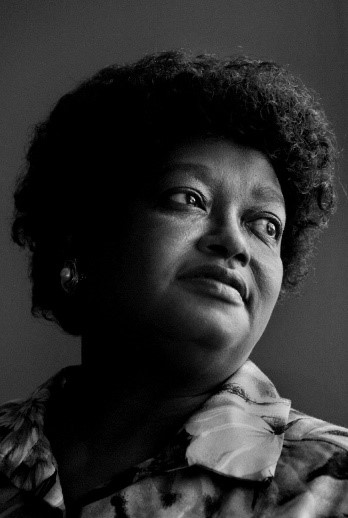
Claudette Colvin (1939 – )
Before Parks refused to give up her seat on a bus in Montgomery, Alabama in 1955, there was a brave 15-year-old who chose not to sit at the back of the bus. That young girl was Colvin. Touting her constitutional rights to remain seated near the middle of the vehicle, Colvin challenged the driver and was subsequently arrested. She was the first woman to be detained for her resistance. However, her story isn’t nearly as well-known as Parks’.
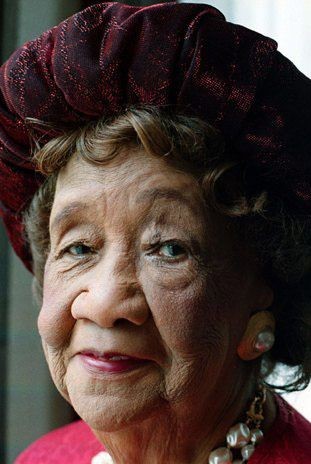
Dorothy Height (1912 – 2010)
Hailed the “godmother of the women’s movement,” Height used her background in education and social work to advance women’s rights. She was a leader in the Young Women’s Christian Association (YWCA) and the president of the National Council of Negro Women (NCNW) for more than 40 years. She was also among the few women present at the 1963 March on Washington, where Dr. King delivered his famous “I Have a Dream” speech.
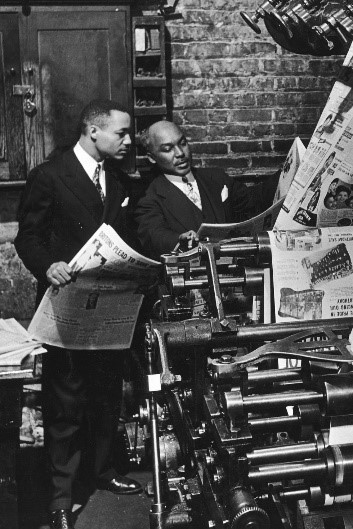
Robert Sengstacke Abbott (1870 – 1940)
Without Abbott’s creative vision, many of the Black publications of today—such as Ebony, Essence, Black Enterprise, and Upscale—wouldn’t exist. In 1905, Abbott founded the Chicago Defender weekly newspaper. The paper originally started out as a four-page pamphlet, increasing its circulation with every edition. Abbott and his newspaper played an integral part in encouraging African Americans to migrate from the South for better economic opportunities.
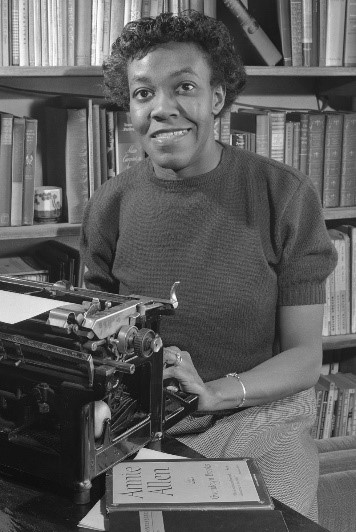
Gwendolyn Brooks (1917 – 2000)
Today, Brooks is considered to be one of the most revered poets of the 20th century. She was the first Black author to win the Pulitzer Prize in 1950 for Annie Allen, and she served as poetry consultant to the Library of Congress, becoming the first Black woman to hold that position. She was also the poet laureate of the State of Illinois, and many of her works reflected the political and social landscape of the 1960s, including the civil rights movement and the economic climate.
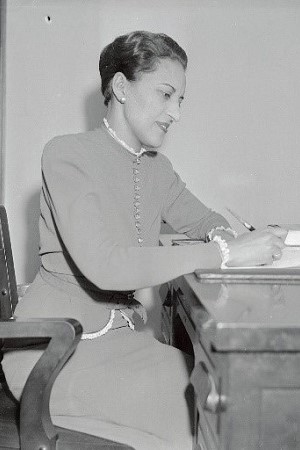
Jane Bolin (1908 – 2007)
A pioneer in law, Jane Bolin was the first Black woman to attend Yale Law School in 1931. In 1939, she became the first Black female judge in the United States, where she served for 10 years. One of her significant contributions throughout her career was working with private employers to hire people based on their skills, as opposed to discriminating against them because of their race. She also served on the boards of the NAACP, Child Welfare League of America, and the Neighborhood Children’s Center.
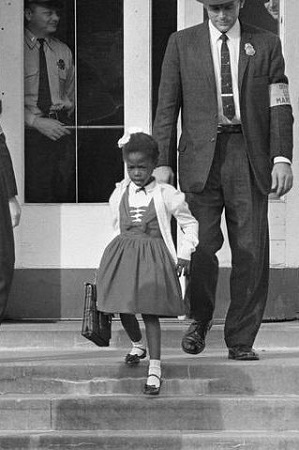
Ruby Bridges (1954 – )
Bridges probably had no idea that the bold act she committed in 1960 would set off a chain reaction leading to the integration of schools in the South. She was just six years old when she became the first African American student to attend William Frantz Elementary in Louisiana at the height of desegregation. She is now the chair of the Ruby Bridges Foundation, which was formed in 1999 to promote “the values of tolerance, respect, and appreciation of all differences.”
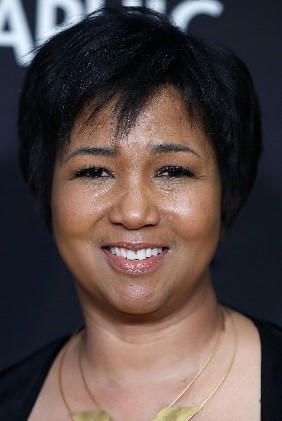
Mae Jemison (1956 – )
Mae Jemison wasn’t just the first African American woman who orbited into space aboard the shuttle Endeavour. She’s also a physician, teacher, a Peace Corps volunteer, and president of tech company, the Jemison Group. She continues to work towards the advancement of young women of color getting more involved in technology, engineering, and math careers.
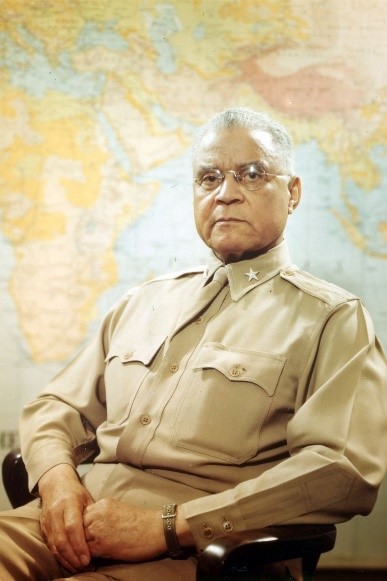
Benjamin O. Davis Sr. (1880-1970)
Benjamin O. Davis Sr. was the first Black general in the American military. He served for 50 years as a temporary first lieutenant at an all-Black unit during the Spanish American War. Throughout his service, Davis Sr. was as a professor of military science at Tuskegee and Wilberforce University, a commander of the 369th Regiment, New York National Guard, and special assistant to the Secretary of the Army. When he retired in 1948, President Harry Truman oversaw the public ceremony. Davis Sr. is buried at Arlington National Cemetery.
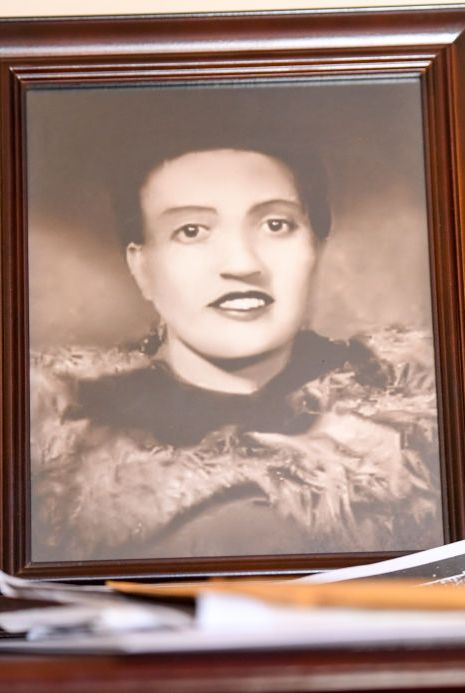
Henrietta Lacks (1920-1951)
After being diagnosed with cervical cancer at The Johns Hopkins Hospital in 1951, a sample of Lacks’s cancer cells were taken without her consent by a researcher. And though she succumbed to the disease at the age of 31 that same year, her cells would go on to advance medical research for years to come, as they had the unique ability to double every 20-24 hours. “They have been used to test the effects of radiation and poisons, to study the human genome, to learn more about how viruses work, and played a crucial role in the development of the polio vaccine,” Johns Hopkins said. In 2017, Oprah starred in and executive produced HBO’s The Immortal Life of Henrietta Lacks, adapted from the book by Rebecca Skloot.
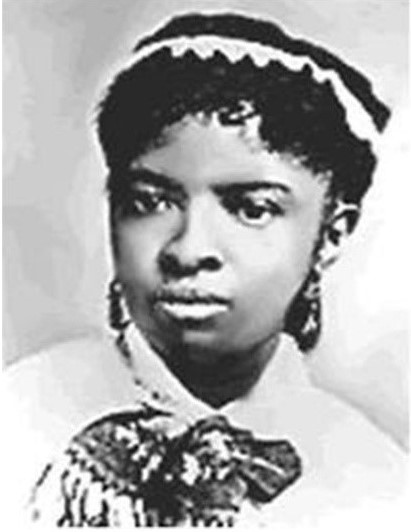
Dr. Rebecca Lee Crumpler (1831-1895)
Rebecca Lee Crumpler was the first Black female doctor in the United States. After attending the prestigious Massachusetts private school West-Newton English and Classical School, she worked as a nurse for eight years until applying to medical school in 1860 at the New England Female Medical College. She was accepted and would go on to graduate four years later. Though little is known of her career, PBS reported that she worked as a physician for the Freedman’s Bureau for the State of Virginia. She later practiced in Boston’s predominantly Black neighborhood at the time, Beacon Hill, and published A Book of Medical Discourses in Two Parts.
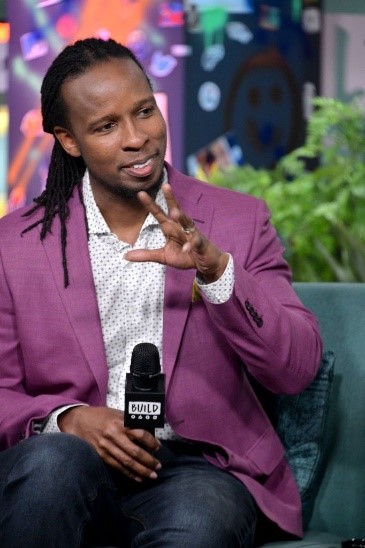
Ibram X. Kendi (1982- )
During the resurgence of the #BlackLivesMatter movement in the summer of 2020, many turned to Ibram X. Kendi’s How to Be Antiracist in order to fully understand the impact of racism and implicit bias in America, and how to combat this institutionalized issue by practicing antiracism. A scholar, author, National Book Award-winner, and historian, Kendi is the founding director of Boston University’s Center for Antiracist Research. In 2020, Time named him one of their 100 most influential people in the world.
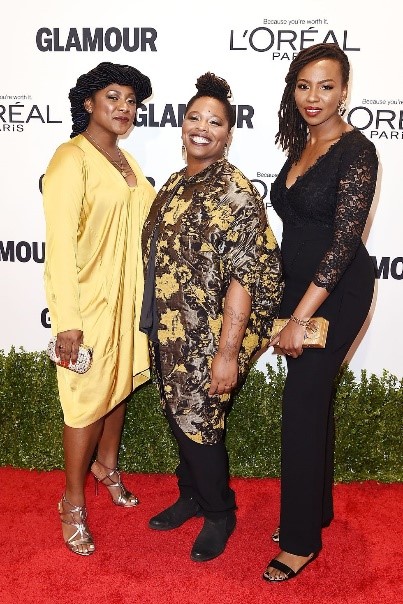
Patrisse Cullors, Alicia Garza, and Opal Tometi
These three women (Patrisse Cullors, Alicia Garza, and Opal Tometi) are the founders of Black Lives Matter. The organization, which was started in 2013 as a reaction to the acquittal of Trayvon Martin’s murderer, has put a global name to the ever-evolving cultural movement that Black lives deserve the equal respect, human treatment, and level of livelihood that is experienced by their white counterparts. They act as an inclusive, nonviolent space to enforce these ideals on both a national and local scale through protest, policy, and social media campaigns. Cullors, Garza, and Tometi were each named on Time’s 2020 most influential people in the world list.
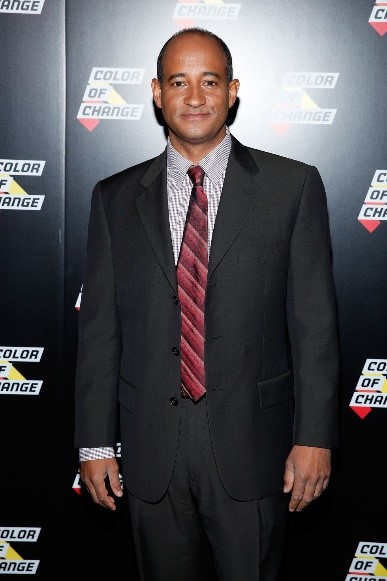
James Rucker
Originally a software entrepreneur, James Rucker co-founded Color of Change in 2005 alongside CNN contributor Van Jones in order to provide relief to victims of Hurricane Katina. In the years since, Color of Change has evolved into a prominent online civil rights organization that serves as a resource for the Black community to use in order to mobilize government and corporations to fight against injustice. Rucker is also the board chair of The Leadership Conference Education Fund and serves on the board of the Southern Poverty Law Center Action Fund and MoveOn.org.
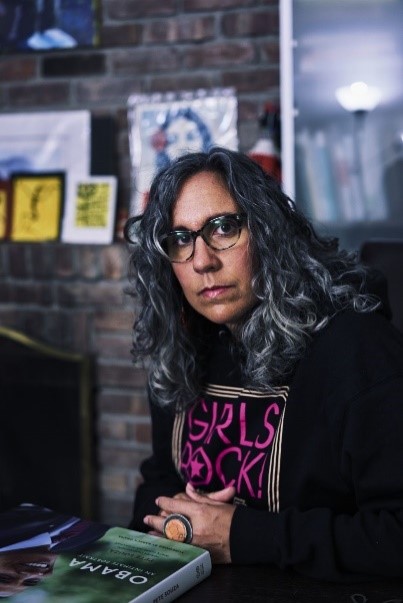
Lisa Gelobter
Gelobter was closely involved with the 1995 creation of Shockwave as a software engineer, the technology that helped to develop web animation. (Think all those GIFs we know and love). She also helped launch Hulu and served on the senior management team.
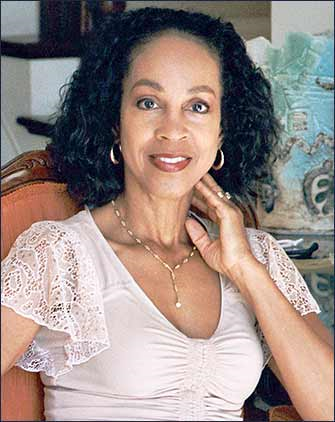
Bebe Moore Campbell (1950 – 2006)
Bebe Moore Campbell was an American author, journalist, teacher, and mental health advocate who worked tirelessly to shed light on the mental health needs of the Black community and other underrepresented communities. She founded NAMI-Inglewood in a predominantly Black neighborhood to create a space that was safe for Black people to talk about mental health concerns. Throughout her time as an advocate, Campbell made her way to DC. On June 2, 2008, Congress formally recognized Bebe Moore Campbell National Minority Mental Health Awareness Month to bring awareness to the unique struggles that underrepresented groups face regarding mental illness in the US.
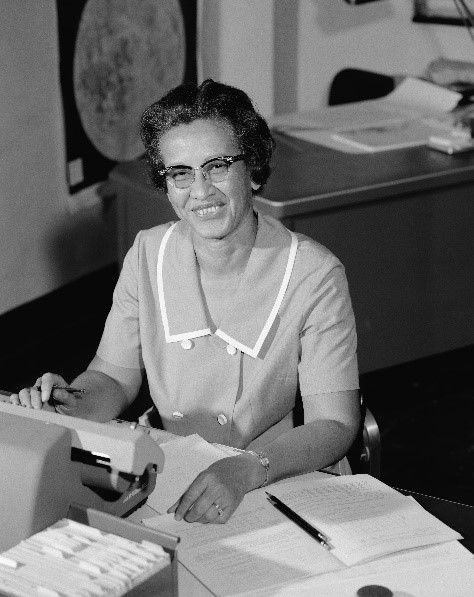
Katherine Johnson (1918 – 2020)
Ms. Johnson was an American mathematician whose calculations of orbital mechanics as a NASA employee were critical to the success of the first and subsequent U.S. crewed spaceflights. During her 35-year career, she earned a reputation for mastering complex manual calculations and helped pioneer the use of computers to perform the tasks. The space agency noted her “historical role as one of the first African-American women to work as a NASA scientist”. Johnson’s work included calculating trajectories, launch windows, and emergency return paths for spaceflights, including those for astronauts Alan Shepard, the first American in space, and John Glenn, the first American in orbit. Her calculations were also essential to the beginning of the Space Shuttle program, and she worked on plans for a mission to Mars. In 2015, President Barack Obama awarded Johnson the Presidential Medal of Freedom. In 2016, she was presented with the Silver Snoopy Award by NASA astronaut Leland D. Melvin and a NASA Group Achievement Award. She was portrayed by Taraji P. Henson as a lead character in the 2016 film Hidden Figures. In 2019, Johnson was awarded the Congressional Gold Medal.
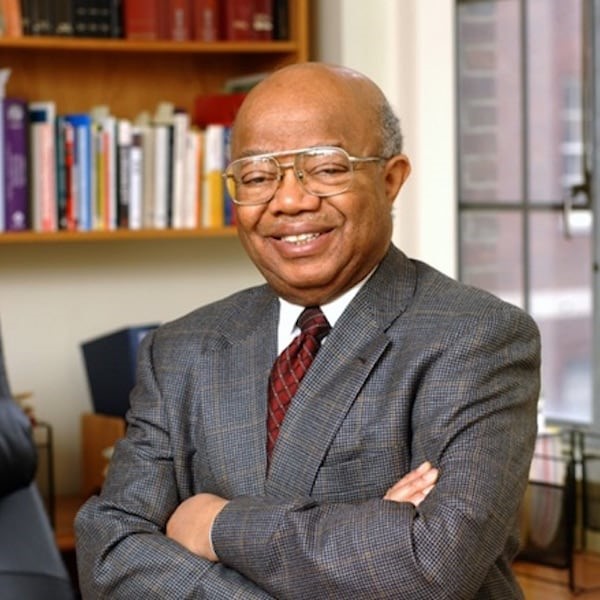
James P. Comer, M.D., M.P.H. (1934 – )
Dr. Comer is known nationally and internationally for his creation of the Comer School Development Program in 1968 within Yale University’s School of Medicine. Dr. Comer’s has focused his career on improving school restructuring and has been featured in numerous newspapers, magazines and television reports, while also having several articles published in academic journals. He is a co-founder and past president of the Black Psychiatrists of America. Dr. Comer is the recipient of countless recognitions and holds over 48 honorary degrees. In 2014, Dr. Comer received a prestigious nomination by President Barrack Obama to serve on the President’s Commission on Educational Excellence for African Americans.
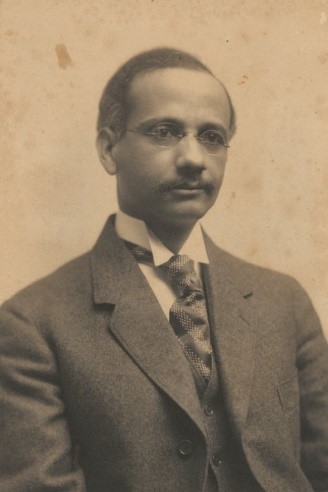
Solomon Carter Fuller, M.D. (1872 – 1953)
Dr. Solomon Carter Fuller was a pioneering African American psychiatrist who made significant contributions to the study of Alzheimer’s disease. He spent most of his career practicing at Westborough State Mental Hospital in Westborough, Massachusetts. While there, he performed his ground-breaking research on the physical changes to the brains of Alzheimer’s patients. Dr. Fuller was one of the first known Black psychiatrists and worked alongside Dr. Alois Alzheimer, who first discovered the traits of Alzheimer’s disease in 1901.
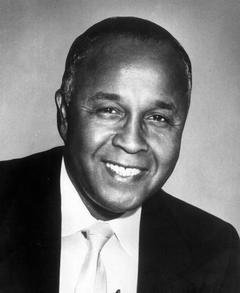
Percy Julian (1899 – 1975)
Percy Lavon Julian was an American research chemist and a pioneer in the chemical synthesis of medicinal drugs from plants. He was the first to synthesize the natural product physostigmine, plus a pioneer in the industrial large-scale chemical synthesis of the human hormones progesterone and testosterone from plant sterols such as stigmasterol and sitosterol. His work laid the foundation for the steroid drug industry’s production of cortisone, other corticosteroids, and birth control pills.
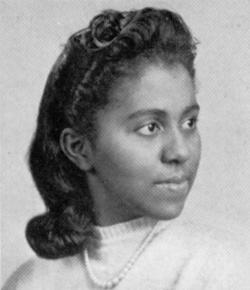
Marie M. Daly (1921 – 2003)
Marie Daly was an American biochemist and the first African-American woman to receive a Chemistry Ph.D. in the United States. Marie’s groundbreaking work led to a new understanding of how diet affects the human circulatory system. Ms. Daly’s early research included studies of the effects of cholesterol on the mechanics of the heart, the effects of sugars and other nutrients on the health of arteries, and the breakdown of the circulatory system as a result of advanced age or hypertension. Later she studied how proteins are produced and organized in the cell. Marie was one of the first people to research the effects of cigarette smoking on the lungs. As well as her own research, Marie taught biochemistry courses while encouraging and supporting minority students to enrol in medical and science programs. In 1988, she founded a scholarship for minority students wanting to study science at Queen’s College in New York.
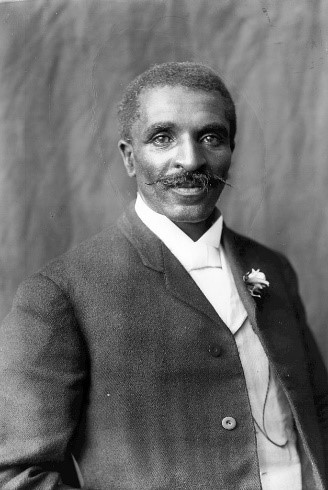
George Washington Carver (1860’s – 1943)
So many of us know George Washington Carver as the man famous for giving us peanut butter (bless him) but he’s responsible for much more. As an agricultural chemist in an effort to increase the profitability of sweet potatoes and peanuts (which thrived in the South as opposed to dwindling cotton supply), Carver began conducting experiments in 1896 and created 518 new products from the crops. They include ink, dye, soap, cosmetics, flour, vinegar, and synthetic rubber. He publicly revealed his experiments in 1914.
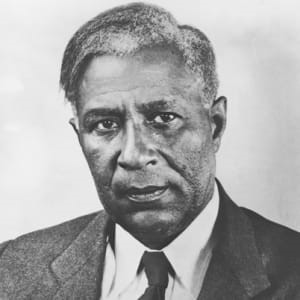
Garrett Morgan (1877 – 1963)
Garrett Augustus Morgan, Sr. was an African-American inventor, businessman, and community leader. His most notable inventions were a three-position traffic signal and a smoke hood notably used in a 1916 tunnel construction disaster rescue. Morgan also discovered and developed a chemical hair-processing and straightening solution. He created a successful company based on his hair product inventions along with a complete line of hair-care products, and became involved in the civic and political advancement of African-Americans, especially in and around Cleveland, Ohio.
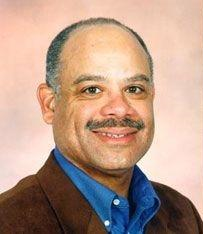
Mark Dean (1957 – )
Dean, who earned a doctorate at Stanford University, is a co-inventor of IBM’s original personal computer and the PC color monitor, literally changing how we all interact with the internet. And the technology that enables printers, keyboards, and mice to communicate with your computer? That’s him, too.
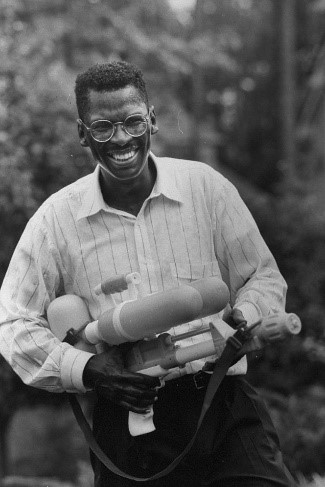
Lonnie Johnson (1949 – )
The engineer developed this mega water gun in his free time while working at NASA’s Jet Propulsion Laboratory. And once the toy, dubbed the Super Soaker, hit shelves in 1990 it’s popularity skyrocketed. In 2017, Forbes reported that it had earned over $1 billion in retail sales.
Shirley Chisholm (1924 – 2005)

Congress is more diverse now than it’s ever been. However, when Chisholm was attempting to shatter the glass ceiling, the same couldn’t be said. During the racially contentious period in the late ’60s, she became the first Black woman elected to Congress. She represented New York’s 12th District from 1969 to 1983, and in 1972, she became the first woman to run for the Democratic Party’s presidential nomination. Her campaign slogan: “Unbought and Unbossed” rings even louder today. Senator Kamala Harris recently paid tribute to Chisholm in her presidential campaign announcement by using a similar logo to Chisholm’s.
Claudette Colvin (1939 – )

Before Parks refused to give up her seat on a bus in Montgomery, Alabama in 1955, there was a brave 15-year-old who chose not to sit at the back of the bus. That young girl was Colvin. Touting her constitutional rights to remain seated near the middle of the vehicle, Colvin challenged the driver and was subsequently arrested. She was the first woman to be detained for her resistance. However, her story isn’t nearly as well-known as Parks’.
Dorothy Height (1912 – 2010)

Hailed the “godmother of the women’s movement,” Height used her background in education and social work to advance women’s rights. She was a leader in the Young Women’s Christian Association (YWCA) and the president of the National Council of Negro Women (NCNW) for more than 40 years. She was also among the few women present at the 1963 March on Washington, where Dr. King delivered his famous “I Have a Dream” speech.
Robert Sengstacke Abbott (1870 – 1940)

Without Abbott’s creative vision, many of the Black publications of today—such as Ebony, Essence, Black Enterprise, and Upscale—wouldn’t exist. In 1905, Abbott founded the Chicago Defender weekly newspaper. The paper originally started out as a four-page pamphlet, increasing its circulation with every edition. Abbott and his newspaper played an integral part in encouraging African Americans to migrate from the South for better economic opportunities.
Gwendolyn Brooks (1917 – 2000)

Today, Brooks is considered to be one of the most revered poets of the 20th century. She was the first Black author to win the Pulitzer Prize in 1950 for Annie Allen, and she served as poetry consultant to the Library of Congress, becoming the first Black woman to hold that position. She was also the poet laureate of the State of Illinois, and many of her works reflected the political and social landscape of the 1960s, including the civil rights movement and the economic climate.
Jane Bolin (1908 – 2007)

A pioneer in law, Jane Bolin was the first Black woman to attend Yale Law School in 1931. In 1939, she became the first Black female judge in the United States, where she served for 10 years. One of her significant contributions throughout her career was working with private employers to hire people based on their skills, as opposed to discriminating against them because of their race. She also served on the boards of the NAACP, Child Welfare League of America, and the Neighborhood Children’s Center.
Ruby Bridges (1954 – )

Bridges probably had no idea that the bold act she committed in 1960 would set off a chain reaction leading to the integration of schools in the South. She was just six years old when she became the first African American student to attend William Frantz Elementary in Louisiana at the height of desegregation. She is now the chair of the Ruby Bridges Foundation, which was formed in 1999 to promote “the values of tolerance, respect, and appreciation of all differences.”
Mae Jemison (1956 – )

Mae Jemison wasn’t just the first African American woman who orbited into space aboard the shuttle Endeavour. She’s also a physician, teacher, a Peace Corps volunteer, and president of tech company, the Jemison Group. She continues to work towards the advancement of young women of color getting more involved in technology, engineering, and math careers.
Benjamin O. Davis Sr. (1880-1970)

Benjamin O. Davis Sr. was the first Black general in the American military. He served for 50 years as a temporary first lieutenant at an all-Black unit during the Spanish American War. Throughout his service, Davis Sr. was as a professor of military science at Tuskegee and Wilberforce University, a commander of the 369th Regiment, New York National Guard, and special assistant to the Secretary of the Army. When he retired in 1948, President Harry Truman oversaw the public ceremony. Davis Sr. is buried at Arlington National Cemetery.
Henrietta Lacks (1920-1951)

After being diagnosed with cervical cancer at The Johns Hopkins Hospital in 1951, a sample of Lacks’s cancer cells were taken without her consent by a researcher. And though she succumbed to the disease at the age of 31 that same year, her cells would go on to advance medical research for years to come, as they had the unique ability to double every 20-24 hours. “They have been used to test the effects of radiation and poisons, to study the human genome, to learn more about how viruses work, and played a crucial role in the development of the polio vaccine,” Johns Hopkins said. In 2017, Oprah starred in and executive produced HBO’s The Immortal Life of Henrietta Lacks, adapted from the book by Rebecca Skloot.
Dr. Rebecca Lee Crumpler (1831-1895)

Rebecca Lee Crumpler was the first Black female doctor in the United States. After attending the prestigious Massachusetts private school West-Newton English and Classical School, she worked as a nurse for eight years until applying to medical school in 1860 at the New England Female Medical College. She was accepted and would go on to graduate four years later. Though little is known of her career, PBS reported that she worked as a physician for the Freedman’s Bureau for the State of Virginia. She later practiced in Boston’s predominantly Black neighborhood at the time, Beacon Hill, and published A Book of Medical Discourses in Two Parts.
Ibram X. Kendi (1982- )

During the resurgence of the #BlackLivesMatter movement in the summer of 2020, many turned to Ibram X. Kendi’s How to Be Antiracist in order to fully understand the impact of racism and implicit bias in America, and how to combat this institutionalized issue by practicing antiracism. A scholar, author, National Book Award-winner, and historian, Kendi is the founding director of Boston University’s Center for Antiracist Research. In 2020, Time named him one of their 100 most influential people in the world.
Patrisse Cullors, Alicia Garza, and Opal Tometi

These three women (Patrisse Cullors, Alicia Garza, and Opal Tometi) are the founders of Black Lives Matter. The organization, which was started in 2013 as a reaction to the acquittal of Trayvon Martin’s murderer, has put a global name to the ever-evolving cultural movement that Black lives deserve the equal respect, human treatment, and level of livelihood that is experienced by their white counterparts. They act as an inclusive, nonviolent space to enforce these ideals on both a national and local scale through protest, policy, and social media campaigns. Cullors, Garza, and Tometi were each named on Time’s 2020 most influential people in the world list.
James Rucker

Originally a software entrepreneur, James Rucker co-founded Color of Change in 2005 alongside CNN contributor Van Jones in order to provide relief to victims of Hurricane Katina. In the years since, Color of Change has evolved into a prominent online civil rights organization that serves as a resource for the Black community to use in order to mobilize government and corporations to fight against injustice. Rucker is also the board chair of The Leadership Conference Education Fund and serves on the board of the Southern Poverty Law Center Action Fund and MoveOn.org.
Lisa Gelobter

Gelobter was closely involved with the 1995 creation of Shockwave as a software engineer, the technology that helped to develop web animation. (Think all those GIFs we know and love). She also helped launch Hulu and served on the senior management team.
Bebe Moore Campbell (1950 – 2006)

Bebe Moore Campbell was an American author, journalist, teacher, and mental health advocate who worked tirelessly to shed light on the mental health needs of the Black community and other underrepresented communities. She founded NAMI-Inglewood in a predominantly Black neighborhood to create a space that was safe for Black people to talk about mental health concerns. Throughout her time as an advocate, Campbell made her way to DC. On June 2, 2008, Congress formally recognized Bebe Moore Campbell National Minority Mental Health Awareness Month to bring awareness to the unique struggles that underrepresented groups face regarding mental illness in the US.
Katherine Johnson (1918 – 2020)

Ms. Johnson was an American mathematician whose calculations of orbital mechanics as a NASA employee were critical to the success of the first and subsequent U.S. crewed spaceflights. During her 35-year career, she earned a reputation for mastering complex manual calculations and helped pioneer the use of computers to perform the tasks. The space agency noted her “historical role as one of the first African-American women to work as a NASA scientist”. Johnson’s work included calculating trajectories, launch windows, and emergency return paths for spaceflights, including those for astronauts Alan Shepard, the first American in space, and John Glenn, the first American in orbit. Her calculations were also essential to the beginning of the Space Shuttle program, and she worked on plans for a mission to Mars. In 2015, President Barack Obama awarded Johnson the Presidential Medal of Freedom. In 2016, she was presented with the Silver Snoopy Award by NASA astronaut Leland D. Melvin and a NASA Group Achievement Award. She was portrayed by Taraji P. Henson as a lead character in the 2016 film Hidden Figures. In 2019, Johnson was awarded the Congressional Gold Medal.
James P. Comer, M.D., M.P.H. (1934 – )

Dr. Comer is known nationally and internationally for his creation of the Comer School Development Program in 1968 within Yale University’s School of Medicine. Dr. Comer’s has focused his career on improving school restructuring and has been featured in numerous newspapers, magazines and television reports, while also having several articles published in academic journals. He is a co-founder and past president of the Black Psychiatrists of America. Dr. Comer is the recipient of countless recognitions and holds over 48 honorary degrees. In 2014, Dr. Comer received a prestigious nomination by President Barrack Obama to serve on the President’s Commission on Educational Excellence for African Americans.
Solomon Carter Fuller, M.D. (1872 – 1953)

Dr. Solomon Carter Fuller was a pioneering African American psychiatrist who made significant contributions to the study of Alzheimer’s disease. He spent most of his career practicing at Westborough State Mental Hospital in Westborough, Massachusetts. While there, he performed his ground-breaking research on the physical changes to the brains of Alzheimer’s patients. Dr. Fuller was one of the first known Black psychiatrists and worked alongside Dr. Alois Alzheimer, who first discovered the traits of Alzheimer’s disease in 1901.
Percy Julian (1899 – 1975)

Percy Lavon Julian was an American research chemist and a pioneer in the chemical synthesis of medicinal drugs from plants. He was the first to synthesize the natural product physostigmine, plus a pioneer in the industrial large-scale chemical synthesis of the human hormones progesterone and testosterone from plant sterols such as stigmasterol and sitosterol. His work laid the foundation for the steroid drug industry’s production of cortisone, other corticosteroids, and birth control pills.
Marie M. Daly (1921 – 2003)

Marie Daly was an American biochemist and the first African-American woman to receive a Chemistry Ph.D. in the United States. Marie’s groundbreaking work led to a new understanding of how diet affects the human circulatory system. Ms. Daly’s early research included studies of the effects of cholesterol on the mechanics of the heart, the effects of sugars and other nutrients on the health of arteries, and the breakdown of the circulatory system as a result of advanced age or hypertension. Later she studied how proteins are produced and organized in the cell. Marie was one of the first people to research the effects of cigarette smoking on the lungs. As well as her own research, Marie taught biochemistry courses while encouraging and supporting minority students to enrol in medical and science programs. In 1988, she founded a scholarship for minority students wanting to study science at Queen’s College in New York.
George Washington Carver (1860’s – 1943)

So many of us know George Washington Carver as the man famous for giving us peanut butter (bless him) but he’s responsible for much more. As an agricultural chemist in an effort to increase the profitability of sweet potatoes and peanuts (which thrived in the South as opposed to dwindling cotton supply), Carver began conducting experiments in 1896 and created 518 new products from the crops. They include ink, dye, soap, cosmetics, flour, vinegar, and synthetic rubber. He publicly revealed his experiments in 1914.
Garrett Morgan (1877 – 1963)

Garrett Augustus Morgan, Sr. was an African-American inventor, businessman, and community leader. His most notable inventions were a three-position traffic signal and a smoke hood notably used in a 1916 tunnel construction disaster rescue. Morgan also discovered and developed a chemical hair-processing and straightening solution. He created a successful company based on his hair product inventions along with a complete line of hair-care products, and became involved in the civic and political advancement of African-Americans, especially in and around Cleveland, Ohio.
Mark Dean (1957 – )

Dean, who earned a doctorate at Stanford University, is a co-inventor of IBM’s original personal computer and the PC color monitor, literally changing how we all interact with the internet. And the technology that enables printers, keyboards, and mice to communicate with your computer? That’s him, too.
Lonnie Johnson (1949 – )

The engineer developed this mega water gun in his free time while working at NASA’s Jet Propulsion Laboratory. And once the toy, dubbed the Super Soaker, hit shelves in 1990 it’s popularity skyrocketed. In 2017, Forbes reported that it had earned over $1 billion in retail sales.